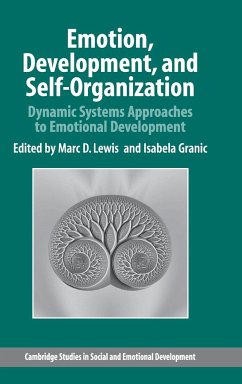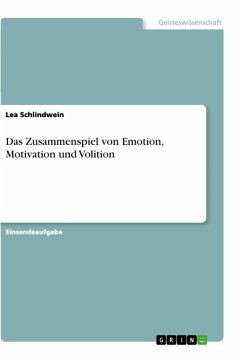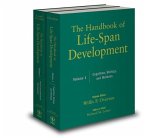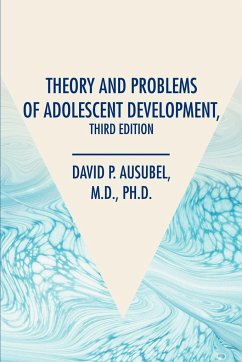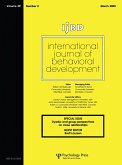Emotion, Development, and Self-Organization
Herausgeber: Lewis, Marc D.; Granic, Isabela
Emotion, Development, and Self-Organization
Herausgeber: Lewis, Marc D.; Granic, Isabela
- Gebundenes Buch
- Merkliste
- Auf die Merkliste
- Bewerten Bewerten
- Teilen
- Produkt teilen
- Produkterinnerung
- Produkterinnerung
This is the first time a book will examine principles of self-organization.
Andere Kunden interessierten sich auch für
![Emotion, Character, and Responsibility Emotion, Character, and Responsibility]() John SabiniEmotion, Character, and Responsibility64,99 €
John SabiniEmotion, Character, and Responsibility64,99 €![Perspectives on Human Development, Family, and Culture Perspectives on Human Development, Family, and Culture]() Perspectives on Human Development, Family, and Culture61,99 €
Perspectives on Human Development, Family, and Culture61,99 €![Development, Psychopathology, and Treatment Techniques Across the Life-Span Development, Psychopathology, and Treatment Techniques Across the Life-Span]() Ivan SherickDevelopment, Psychopathology, and Treatment Techniques Across the Life-Span34,99 €
Ivan SherickDevelopment, Psychopathology, and Treatment Techniques Across the Life-Span34,99 €![Das Zusammenspiel von Emotion, Motivation und Volition Das Zusammenspiel von Emotion, Motivation und Volition]() Lea SchlindweinDas Zusammenspiel von Emotion, Motivation und Volition9,99 €
Lea SchlindweinDas Zusammenspiel von Emotion, Motivation und Volition9,99 €![The Handbook of Life-Span Development, 2 Volume Set The Handbook of Life-Span Development, 2 Volume Set]() The Handbook of Life-Span Development, 2 Volume Set445,99 €
The Handbook of Life-Span Development, 2 Volume Set445,99 €![Theory and Problems of Adolescent Development, Third Edition Theory and Problems of Adolescent Development, Third Edition]() David P. AusubelTheory and Problems of Adolescent Development, Third Edition32,99 €
David P. AusubelTheory and Problems of Adolescent Development, Third Edition32,99 €![International Journal of Behavioral Development, Volume 29 International Journal of Behavioral Development, Volume 29]() International Journal of Behavioral Development, Volume 2955,99 €
International Journal of Behavioral Development, Volume 2955,99 €-
-
-
This is the first time a book will examine principles of self-organization.
Hinweis: Dieser Artikel kann nur an eine deutsche Lieferadresse ausgeliefert werden.
Hinweis: Dieser Artikel kann nur an eine deutsche Lieferadresse ausgeliefert werden.
Produktdetails
- Produktdetails
- Verlag: Cambridge University Press
- Seitenzahl: 422
- Erscheinungstermin: 3. Dezember 2014
- Englisch
- Abmessung: 235mm x 157mm x 29mm
- Gewicht: 832g
- ISBN-13: 9780521640893
- ISBN-10: 052164089X
- Artikelnr.: 21989583
- Herstellerkennzeichnung
- Libri GmbH
- Europaallee 1
- 36244 Bad Hersfeld
- gpsr@libri.de
- Verlag: Cambridge University Press
- Seitenzahl: 422
- Erscheinungstermin: 3. Dezember 2014
- Englisch
- Abmessung: 235mm x 157mm x 29mm
- Gewicht: 832g
- ISBN-13: 9780521640893
- ISBN-10: 052164089X
- Artikelnr.: 21989583
- Herstellerkennzeichnung
- Libri GmbH
- Europaallee 1
- 36244 Bad Hersfeld
- gpsr@libri.de
Introduction: a new approach to study of emotional development Marc D.
Lewis and Isabela Granic; Part I: Intrapersonal Processes: 2. Self
organization of discrete emotions, emotion patterns, and emotion-cognition
relations Carroll Izard; 2. Emotional self-organization at three time
scales Marc D. Lewis; 3. Emotions as episodes of subsystem synchronization
driven by nonlinear appraisal processes Klaus R. Scherer; 5. Surprise!
Facial expressions can be coordinative motor structures Linda Camras; 6.
The dynamic construction of emotion: varieties in anger M. F. Mascolo; Part
II: Neurobiological Perspectives: 7. The self-organization of the right
brain and the neurobiology of emotional development Alan N. Schore; 8.
Motivation of neural plasticity: neural mechanisms in the self-organization
of depression Kate Harkness and Don M. Tucker; 9. Emotion is essential to
all intentional behaviors Walter J. Freeman; 10. The neurodynamics of
emotions: an evolutionary-neurodevelopmental view Jaak Panksepp; Part III.
Interpersonal Processes: 11. Beyond bidirectional models of parent-child
relations: a self-organization perspective Isabela Granic; 12. Attachment
and self-organization Deborah Laible and Ross Thompson; 13. The dynamics of
emotion-related behaviors in infancy C. de Weerth and Paul van Geert; 14.
Theoretical and mathematical modeling of marriage K. D. Ryan and J. M.
Gottman; 15. The dynamics of emotion: metaphors, methods, and models of
development Daniel P. Keating and Fiona K. Miller.
Lewis and Isabela Granic; Part I: Intrapersonal Processes: 2. Self
organization of discrete emotions, emotion patterns, and emotion-cognition
relations Carroll Izard; 2. Emotional self-organization at three time
scales Marc D. Lewis; 3. Emotions as episodes of subsystem synchronization
driven by nonlinear appraisal processes Klaus R. Scherer; 5. Surprise!
Facial expressions can be coordinative motor structures Linda Camras; 6.
The dynamic construction of emotion: varieties in anger M. F. Mascolo; Part
II: Neurobiological Perspectives: 7. The self-organization of the right
brain and the neurobiology of emotional development Alan N. Schore; 8.
Motivation of neural plasticity: neural mechanisms in the self-organization
of depression Kate Harkness and Don M. Tucker; 9. Emotion is essential to
all intentional behaviors Walter J. Freeman; 10. The neurodynamics of
emotions: an evolutionary-neurodevelopmental view Jaak Panksepp; Part III.
Interpersonal Processes: 11. Beyond bidirectional models of parent-child
relations: a self-organization perspective Isabela Granic; 12. Attachment
and self-organization Deborah Laible and Ross Thompson; 13. The dynamics of
emotion-related behaviors in infancy C. de Weerth and Paul van Geert; 14.
Theoretical and mathematical modeling of marriage K. D. Ryan and J. M.
Gottman; 15. The dynamics of emotion: metaphors, methods, and models of
development Daniel P. Keating and Fiona K. Miller.
Introduction: a new approach to study of emotional development Marc D.
Lewis and Isabela Granic; Part I: Intrapersonal Processes: 2. Self
organization of discrete emotions, emotion patterns, and emotion-cognition
relations Carroll Izard; 2. Emotional self-organization at three time
scales Marc D. Lewis; 3. Emotions as episodes of subsystem synchronization
driven by nonlinear appraisal processes Klaus R. Scherer; 5. Surprise!
Facial expressions can be coordinative motor structures Linda Camras; 6.
The dynamic construction of emotion: varieties in anger M. F. Mascolo; Part
II: Neurobiological Perspectives: 7. The self-organization of the right
brain and the neurobiology of emotional development Alan N. Schore; 8.
Motivation of neural plasticity: neural mechanisms in the self-organization
of depression Kate Harkness and Don M. Tucker; 9. Emotion is essential to
all intentional behaviors Walter J. Freeman; 10. The neurodynamics of
emotions: an evolutionary-neurodevelopmental view Jaak Panksepp; Part III.
Interpersonal Processes: 11. Beyond bidirectional models of parent-child
relations: a self-organization perspective Isabela Granic; 12. Attachment
and self-organization Deborah Laible and Ross Thompson; 13. The dynamics of
emotion-related behaviors in infancy C. de Weerth and Paul van Geert; 14.
Theoretical and mathematical modeling of marriage K. D. Ryan and J. M.
Gottman; 15. The dynamics of emotion: metaphors, methods, and models of
development Daniel P. Keating and Fiona K. Miller.
Lewis and Isabela Granic; Part I: Intrapersonal Processes: 2. Self
organization of discrete emotions, emotion patterns, and emotion-cognition
relations Carroll Izard; 2. Emotional self-organization at three time
scales Marc D. Lewis; 3. Emotions as episodes of subsystem synchronization
driven by nonlinear appraisal processes Klaus R. Scherer; 5. Surprise!
Facial expressions can be coordinative motor structures Linda Camras; 6.
The dynamic construction of emotion: varieties in anger M. F. Mascolo; Part
II: Neurobiological Perspectives: 7. The self-organization of the right
brain and the neurobiology of emotional development Alan N. Schore; 8.
Motivation of neural plasticity: neural mechanisms in the self-organization
of depression Kate Harkness and Don M. Tucker; 9. Emotion is essential to
all intentional behaviors Walter J. Freeman; 10. The neurodynamics of
emotions: an evolutionary-neurodevelopmental view Jaak Panksepp; Part III.
Interpersonal Processes: 11. Beyond bidirectional models of parent-child
relations: a self-organization perspective Isabela Granic; 12. Attachment
and self-organization Deborah Laible and Ross Thompson; 13. The dynamics of
emotion-related behaviors in infancy C. de Weerth and Paul van Geert; 14.
Theoretical and mathematical modeling of marriage K. D. Ryan and J. M.
Gottman; 15. The dynamics of emotion: metaphors, methods, and models of
development Daniel P. Keating and Fiona K. Miller.

